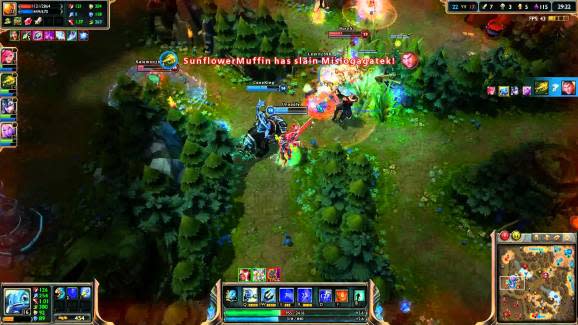Riot Games working with Comcast, AT&T, and other ISPs to build a dedicated League of Legends network

North American League of Legends players should see improvements in their online experience by March this year as developer Riot Games works with the big Internet service providers to improve network connections.
Many U.S. gamers report latency in their experience with the hugely popular multiplayer online battle arena game (MOBA), especially those on the East Coast. Riot Games is now working with ISPs like Verizon to tackle that problem, cutting the distance that data for the game travels and making for smoother gameplay. It’s similar to the way that Netflix works with AT&T, Verizon, and Comcast to provide a reliable streaming service to its viewers. Netflix pays the big ISPs to ensure strong interconnectivity and there’s no reason to assume Riot Games won’t do the same.
Charlie Hauser, the brand strategist at Riot Games — which is close to making $1 billion in annual revenue from League of Legends — explained why the move is necessary in a forum post.
“Currently, ISPs focus primarily on moving large volumes of data in seconds or minutes, which is good for buffered applications like YouTube or Netflix but not so good for real-time games, which need to move very small amounts of data in milliseconds,” said Hauser. “On top of that, your Internet connection might bounce all over the country instead of running directly to where it needs to go, which can impact your network quality and ping whether the game server is across the country or right down the street.
“This is why we’re in the process of creating our own direct network for League traffic and working with ISPs across the U.S. and Canada to connect players to this network.”
The network will be in place by March, according to Hauser, although agreements with the big ISPs may take a little longer:
“The hardware will be functional — the agreements may take a little extra time — since contracts always do — and there will be extra work hammering out individual hiccups and making sure as many players as possible have their connections pathing correctly to this network. The March goal should include getting the agreements done — and we are currently on schedule in that regard — but the back-and-forth on contracts never fails to amaze me on how long it can take!”
Part of Riot’s challenge is to educate the ISPs in online gaming’s value, according to vice president of network operations Ron Williams:
“It can take us many months to work with large ISP companies to achieve even modest results. Gaming is currently not a priority for most. However, we are investing a lot of time in educating the ISPs that have LoL players as customers. It is very company dependent, and we expect it will be a long road to travel but ultimately great for gamers.”
Williams says the move should eventually benefit all North American players, regardless of where they live. “This network should bring a marginal improvement for everyone — coast to coast,” he said. “West Coasters are impacted by this as well — we’ve seen traffic in San Francisco get bounced across the country before finally getting to the server.”
Mobile developer or publisher? VentureBeat is studying mobile marketing automation. Fill out our 5-minute survey, and we'll share the data with you.

